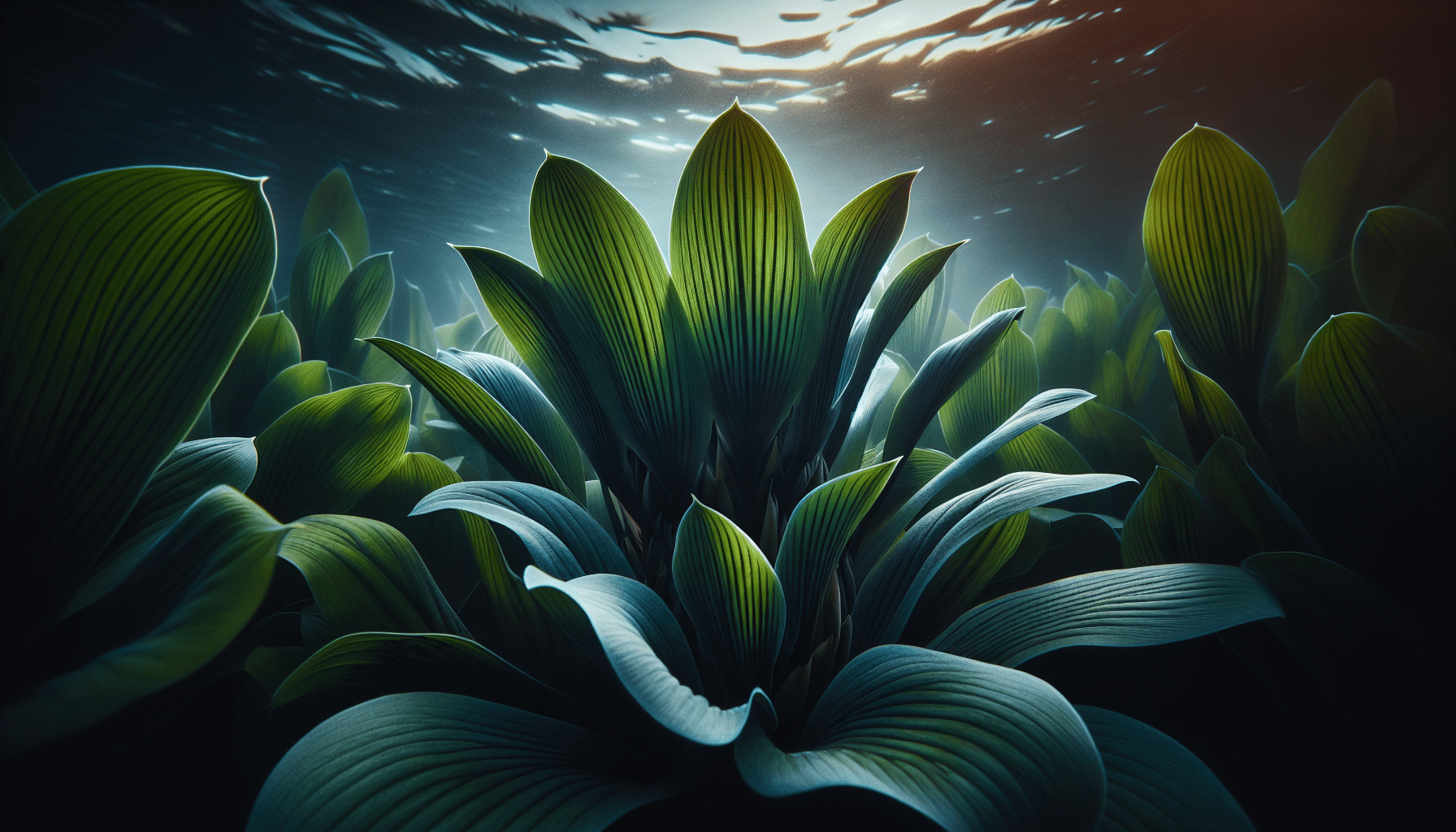In the realm of aquatic ecology, understanding the characteristics of individual flora like Caldesia Parnassifolia, an aquatic weed, is vital. This article presents an intricate analysis of Caldesia Parnassifolia, exploring its botanical features, growth habits, environmental significance, and impact on the aquatic ecosystem. Furthermore, you’ll gain insights on how this aquatic weed interacts with its surroundings, the functions it serves, and its overall contribution to the dynamic world under the water surface. Your comprehension of aquatic plants will be significantly deepened as you journey through the intricacies of Caldesia Parnassifolia.

Overview of Caldesia Parnassifolia
Definition and basic features
Caldesia Parnassifolia, frequently referred to as the aquatic weed, is a perennial herb found primarily in aquatic environments. This plant is recognisable by its rosette of floating leaves, which spread across the water’s surface, and small white flowers that sprout above the water. Having a root system that anchors deep into the muddy subsoil of river banks and ponds, it is quite sturdy and resilient, making it capable of surviving in a variety of conditions.
Taxonomical classification
In terms of taxonomy, Caldesia Parnassifolia belongs to the Alismataceae family, a group of flowering plants that includes roughly 90 species distributed across 11 different genera. The Alismataceae family is primarily composed of aquatic and marsh species, further classifying the Caldesia genus, which is comprised of about six species, including Caldesia Parnassifolia.
Identification of Caldesia Parnassifolia
Physical attributes
Caldesia Parnassifolia can be identified by its distinctive physical features. Its leaves are generally cordate (heart-shaped) or circular, with a slightly crinkled texture. They typically float on the water’s surface, giving the plant its ubiquitous name. The plants produce small white flowers that grow in clusters on long stalks, rising high above the water surface.
Typical growing locations
Caldesia Parnassifolia tends to favor stagnant or slow-moving waters. It is typically found in marshes, along the banks of rivers or ponds, and in other similar aquatic environments. The plant can adapt to a variety of water conditions, and is not picky about sun exposure, which makes it quite versatile in terms of habitat.
Caldesia Parnassifolia’s Growth and Reproduction
Life cycle
Being a perennial, Caldesia Parnassifolia has a life cycle that extends over several years. Once established, the plant will continue to grow and spread, covering the aquatic surface extensively. It starts its life as tiny seeds which eventually blossom into mature, floating plants.
Flowering and seed dispersal
Caldesia Parnassifolia flowers from summer to fall, producing small, white petals that are grouped together on long stalks. Following the flowering period, the plant will begin to produce seeds, which are dispersed by wind or water currents. An individual plant can produce a large number of seeds, aiding in its prolific spread.

Ecological Role of Caldesia Parnassifolia
Habitat provision
As an aquatic plant, Caldesia Parnassifolia creates habitats for a host of underwater creatures. Its expansive leaves and roots provide shelter for small fish and other organisms, while its flowers act as a food source for certain insects.
Soil stabilization
The root network of Caldesia Parnassifolia offers structural title and stability, helping prevent soil erosion in aquatic environments. Its roots anchor deeply into the wet marshy soil, serving as a natural barrier against soil displacement.
Food source for certain species
Different parts of Caldesia Parnassifolia serve as a food source for various species. The leaves and seed pods provide nourishment for certain birds and waterfowl, while the aquatic insects are attracted to its nectar-rich flowers.
The Effect of Caldesia Parnassifolia on Aquatic Ecosystems
Impact on water quality
By creating dense mats of vegetation across the water’s surface, Caldesia Parnassifolia can negatively impact water quality. These mats can limit the amount of sunlight that reaches the water’s depths, thus affecting the underwater photosynthesis process. This can subsequently lead to reduced oxygen levels in the water, potentially harming fish and other aquatic life.
Alteration of aquatic habitats
Caldesia Parnassifolia alters aquatic habitats, often to the detriment of native species. The formation of dense mats prevents access to open water and obstructs movement for certain aquatic creatures. It also competes with native aquatic plants for resources such as sunlight, nutrients, and space.
Competition with native plants
Aside from altering aquatic habitats, Caldesia Parnassifolia poses a significant threat to native plants due to its invasive nature. It grows rapidly and reproduces extensively, thus outcompeting native plants for the aforementioned resources.
Caldesia Parnassifolia as an Invasive Weed
Reasons for its invasive nature
Caldesia Parnassifolia’s robust growth and reproductive capabilities largely contribute to its invasive nature. It is able to survive in a range of water conditions and can grow in both direct sunlight and partial shade. Its extensive seed production further enhances its invasive potential, allowing it to spread and dominate aquatic habitats rapidly.
Areas affected by its invasion
Despite originating from East Asia, Caldesia Parnassifolia has now spread and established itself in various parts of the world. It has become a particular nuisance in many countries, particularly those with ample water bodies, causing significant environmental concerns.
Control Measures for Caldesia Parnassifolia
How to physically control and remove
Manual removal is one method to control the spread of Caldesia Parnassifolia. This involves physically uprooting the plant from the water bodies. While it can be labor-intensive and time-consuming, it is an eco-friendly solution without any side effects.
Chemical control options
Using herbicides offers another option to manage Caldesia Parnassifolia populations. However, it is important that the herbicides are used judiciously and selectively to prevent harm to non-target species and avoid adverse ecological impacts.
Biological control methods
Biological methods, such as introducing Caldesia Parnassifolia’s natural predators or diseases, could potentially serve as an effective strategy for controlling its spread. This method, however, requires thorough understanding and research to ensure the introduced species don’t become another invasive problem.
Negative Impacts of Caldesia Parnassifolia
Damage to native ecosystems
As a non-native invasive monospecific system, Caldesia Parnassifolia can alter native ecosystems, outcompete native species for resources, and alter the habitat conditions. Such changes can negatively impact the biodiversity of the aquatic ecosystem.
Effect on the economy
The invasive nature of Caldesia Parnassifolia can have adverse effects on local economies, particularly those relying on aquatic environments for their livelihood, such as fishing and tourism industries. Eliminating and managing the spread of this invasive weed can also involve significant expenses.
Impact on recreational activities
By forming dense mats across the water’s surface, Caldesia Parnassifolia can obstruct navigation and hinder water-based recreational activities. This can alter the aesthetic appeal of the water bodies and disturb the tranquillity of the surroundings, constantly affecting tourism.
Research on Caldesia Parnassifolia
Current scientific research
The invasive nature and ecological impacts of Caldesia Parnassifolia have spurred considerable scientific interest and research. Current research aims to understand its biology and ecology better, explore effective control methods, and assess its impacts on aquatic ecosystems.
Implications for ecology and conservation
The research findings on Caldesia Parnassifolia have significant implications for ecology and conservation. By understanding its behavior and impacts on the environment, management can be optimized to prevent further spread and mitigate its negative effects. This facilitates the conservation of native biodiversity, ensuring their survival for future generations.
Future Prospects of Caldesia Parnassifolia
Potential uses
While Caldesia Parnassifolia is considered a problem as an invasive weed, it may also offer potential uses. For instance, it can work as a bioindicator to determine the quality of water in an area due to its sensitivity to water conditions.
Ongoing challenges and possible solutions
Despite current efforts to control Caldesia Parnassifolia, several challenges persist. These include its rapid spread, resilience, and adaptability, which exacerbate management efforts. However, continued research and innovative solutions, such as exploring the feasibility of biological control methods and improving existing control strategies, may offer potential solutions to these problems.